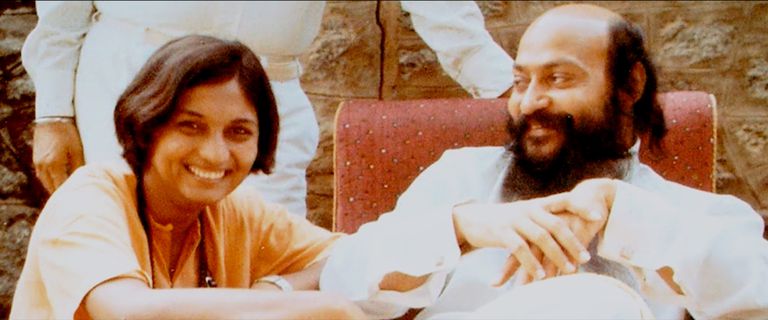‘Wild Wild Country’ review
If like me you’re stuck in Netflix’s mouse wheel, constantly in the cycle of binging a show then hunting for the next one to watch, boy do I have the perfect fix. Wild Wild Country is a docuseries produced by the Duplass brothers, of The Mindy Project and Transparent fame, that centres around how one cult grew to epic proportions in 1980s Oregon and the ensuing war between its followers, ‘Rajneeshees’, and the rest of America.
Lead by Bhagwan Shree Rajneesh, an Indian mystic also known as ‘the sex guru’ for his encouragement of free love, the Rajneeshees built a huge community whose breadth and development is truly captured in its vastness on film. The 64,000-acre area of Oregon had its own airstrip, shopping mall, restaurants and townhouses, filled exclusively by its orange dressed worshipers.
The show explains how such a project could even have happened and provides an extensive inside look at cult life inside Rajneeshpuram, though focuses the majority of its episodes on the dramatic tension between the community and Oregon locals. What begins as mutual contempt of one another, eventually devolves into massive federal crimes and prosecutions.
we see a tenacious Indian woman’s journey from a young disciple into an armed figurehead
The key figure in the conflict is Ma Anand Sheela, Bhagwan’s secretary and essentially the leader of the community given the guru’s self-imposed silence. Through archive footage and a talking head interview, we see a tenacious Indian woman’s journey from a young disciple into an armed figurehead and eventual fugitive.
Any sane person would regard her as the villain, but through the series she becomes the leading anti-hero. Perhaps it is because she is the ultimate leader of seven thousand people, despite being a foreign-born woman, something unheard of in the 80s. However, more likely it is due to her wild yet charismatic personality.
During her 4-year stint as spokesperson for the Rajneeshees, Sheela delivered countless unabashed interviews, that were consistently provocative in nature, as she demonstrated that she would not perform as a palatable character and seek western approval. My absolute favourite example of this, and one that cemented her position as intrinsically likeable towards a modern young audience, was when a reporter asked about objections to Rajneesh expansion and she simply replied: ‘What I can say? Tough titties’.
Any sane person would regard her as the villain, but through the series she becomes the leading anti-hero
Yet Sheela was not just a provocative figure; instead, the woman took advantage of the progressive counter culture she portrayed, at one-point remarking: ‘this county is so fucking bigoted it deserves to be taken over’. Many of her schemes relied on a false pretence of selflessness, as she posed as the true Samaritan amidst the false Christians of America. At one of her rallies she shouted: ‘they didn’t have the courage to accept you as people, and you fought for them, I’m going to fight for you’. Rousing, her cause seems worthy and courageous yet as the series continues the true nature of her actions are revealed, and we discover how she is much more villainous than religious.
Despite the reveals which detail a widespread conspiracy of crimes, Sheela never sincerely feels evil. The calm modern-day interviews from a now greying Sheela, explain her actions as perfectly reasonable, or not her responsibility, and contrary to the facts she is convincing. With a tranquil half-smile on her face she appears more as the persecuted than the aggressor.
So, watch Wild Wild Country, not just because it is a clever true crime series, that follows in the footsteps of Netflix’s other hits such as Making a Murderer and The Keepers, but because the players and events are uniquely compelling. Maybe you can help me figure out if Ma Anand Sheela is not a sweet old lady and is instead a life-long psychopath, and if that means she can’t be my feminist icon.

Comments